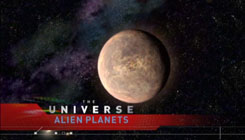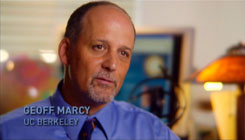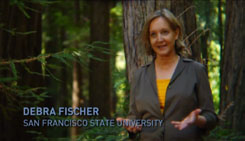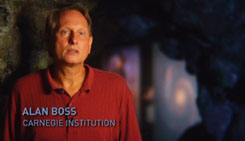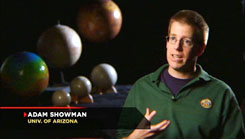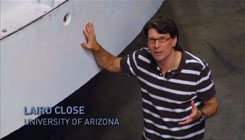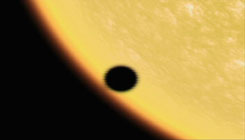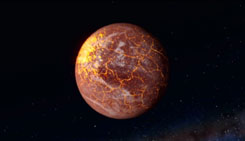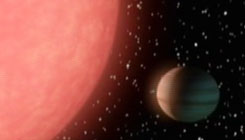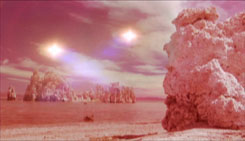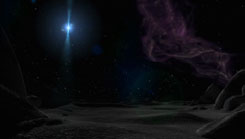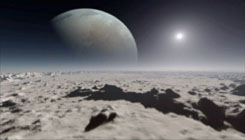This documentary is an absolute classic episode of this series,
as it is entirely devoted to a popular and exciting topic - the
history of the exploration of
extra-solar planets which orbit stars outside of our solar system.
The episode dives deep into the topic,
giving us lots of detail about many planets discovered, and how such discoveries
were made under challenging and sometimes disheartening circumstances.
This is easily astronomer Geoff Marcy's episode more than anyone else's,
as he gets loads of screentime (deservedly so) and gives us the up and down
story of his career with long-time collaborator Paul Butler.
Two thumbs way up on this episode - easily one of my most cherished
favourites from "The Universe" series.
Exoplanets discussed include:
- 51 Pegasi b (Not only is it not revealed that Marcy
nicknamed this planet Bellerophon when he and Butler officially confirmed its existence,
but the episode insists the planet has no Greek-God name at all.
Haaa hahaahaha!)
- 70 Virginis b (first planet discovered with massively elliptical orbit,
previously mislabeled as "Goldilocks")
- "Tres-4" (hot jupiter in Hercules, pronounced as "Trace Four",
first star transit detected in fall 2007)
- HD 189733 b
- HD 80606 b in Ursa Major, 200 LY distant
- pulsar planets 7000 trillion miles distant,
detected before 51 Pegasi b
(sadly without naming them or mentioning how we
detected them prior to the star-wobble technique that revealed
the hot jupiters)
-
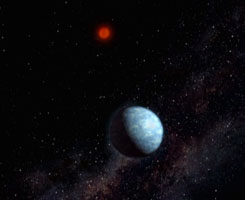
Gliese 436 b in Leo, 30 LY distant,
20 times bigger than Earth, similar to Neptune in mass/size
- Gliese 876 d, one of the smallest planets yet discovered
at the time of this episode (6-7 times Earth size), and
in the habitable zone of a system known to have
at least 3 planets in orbit of the M dwarf star
Geoff Marcy:
"It's embarrassing, frankly,
when you think about how we humans
imagined planets would orbit other stars,
how common they would be,
what properties they would have...
Guess what?
We imagined that those planets
would look just like the planets that orbit our sun.
Extraordinarily nearsighted in retrospect,
and for a scientist, I find it embarrassing that
I was a party to this.
But in fact, what we've learned is that planets
around other stars are remarkably different
from the representatives we have around our sun."
from the disc sleeve:
Alien Planets:
Just a decade ago, not a single planet was known to exist beyond our solar system.
Astronomers have since discovered over 200 of these alien worlds -
planets with such fierce conditions they seem inhabitable.
But have planet hunters finally found proof of other Earth-like worlds?
Chapter List:
- Introduction
- Types of Worlds
- Hot Jupiters
- Extreme Weather
- Strange Worlds
- Super Telescopes
As this program was made, the year was 2007, and
the exoplanet count was just over 200.
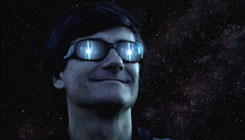 And of course, who can forget disaster-enthusiast
Alex Filippenko's imagining of being nuked with intense radiation blasts
on the surface of a pulsar planet? To each, his own pleasures,
I guess...
And of course, who can forget disaster-enthusiast
Alex Filippenko's imagining of being nuked with intense radiation blasts
on the surface of a pulsar planet? To each, his own pleasures,
I guess...
|
Participants include:
|

